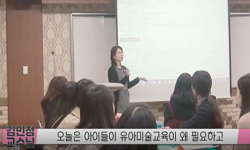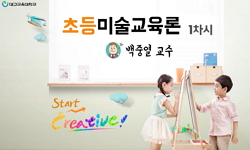The distinguished German art historian Hans Belting contends that the Renaissance marked a transition from “the Age of the Image” to “the Age of Art.” In the medieval period, religious images were seen as receptacles of divine presence and ser...
http://chineseinput.net/에서 pinyin(병음)방식으로 중국어를 변환할 수 있습니다.
변환된 중국어를 복사하여 사용하시면 됩니다.
- 中文 을 입력하시려면 zhongwen을 입력하시고 space를누르시면됩니다.
- 北京 을 입력하시려면 beijing을 입력하시고 space를 누르시면 됩니다.

“있음”의 예술: 르네상스 시대 종교화의 기능적 특성에 대한 연구사적 검토 = Rethinking the Ontological Status of Religious Images in the Renaissance: A Historiographical Perspective
한글로보기https://www.riss.kr/link?id=A109734106
-
저자
한유나 (서울대학교)
- 발행기관
- 학술지명
- 권호사항
-
발행연도
2025
-
작성언어
Korean
-
주제어
르네상스 ; 종교화 ; 미술 ; 현존 ; 자연주의 ; 환영 ; Renaissance ; religious images ; art ; presence ; naturalism ; illusion
-
등재정보
KCI등재
-
자료형태
학술저널
-
수록면
6-31(26쪽)
- DOI식별코드
- 제공처
-
0
상세조회 -
0
다운로드
부가정보
다국어 초록 (Multilingual Abstract)
Admittedly, Renaissance religious images differed from their medieval predecessors in their emphasis on inventive concepts and technical mastery, which created the visual illusion of encounters with the sacred. A central aim was to render holy figures with lifelike presence through naturalistic techniques. Some works even depicted inanimate images coming to life. Artists also constructed convincing spatial settings—using techniques such as linear perspective and depicting architectural elements like windows and curtains—to make the divine appear present here and now. Figures shown interacting with the sacred offered viewers emotional entry points, particularly when physical contact was depicted. In light of these developments, it is difficult to regard the Renaissance as a complete break from the medieval tradition, as Belting suggests. Rather than a wholly new era, the Renaissance should be understood as a dynamic period of negotiation between continuity and change, between religion and art.
The distinguished German art historian Hans Belting contends that the Renaissance marked a transition from “the Age of the Image” to “the Age of Art.” In the medieval period, religious images were seen as receptacles of divine presence and served as objects of worship. With the advent of the Renaissance, however, veneration shifted toward the artist’s creativity and the image’s aura as an artwork. Belting’s thesis has shaped scholarly discourse over the past thirty years. Yet recent scholarship increasingly emphasizes continuity rather than rupture between medieval and Renaissance religious imagery. These studies argue that the traditional function of the image—as a mediator of divine presence—persisted into the Renaissance.
Admittedly, Renaissance religious images differed from their medieval predecessors in their emphasis on inventive concepts and technical mastery, which created the visual illusion of encounters with the sacred. A central aim was to render holy figures with lifelike presence through naturalistic techniques. Some works even depicted inanimate images coming to life. Artists also constructed convincing spatial settings—using techniques such as linear perspective and depicting architectural elements like windows and curtains—to make the divine appear present here and now. Figures shown interacting with the sacred offered viewers emotional entry points, particularly when physical contact was depicted. In light of these developments, it is difficult to regard the Renaissance as a complete break from the medieval tradition, as Belting suggests. Rather than a wholly new era, the Renaissance should be understood as a dynamic period of negotiation between continuity and change, between religion and art.
동일학술지(권/호) 다른 논문
-
- 미술사와 시각문화학회
- 장진성
- 2025
- KCI등재
-
판화에서 산수로: 17세기 실경산수화의 전환과 정선의 금강산도
- 미술사와 시각문화학회
- 이경화
- 2025
- KCI등재
-
심주(沈周)의 <여산고도(廬山高圖)>: 15세기 소주(蘇州)의 서원(書院)과 문인 감상자층을 위한 회화
- 미술사와 시각문화학회
- 송창묵
- 2025
- KCI등재
-
- 미술사와 시각문화학회
- 오윤정
- 2025
- KCI등재




 KCI
KCI KISS
KISS






